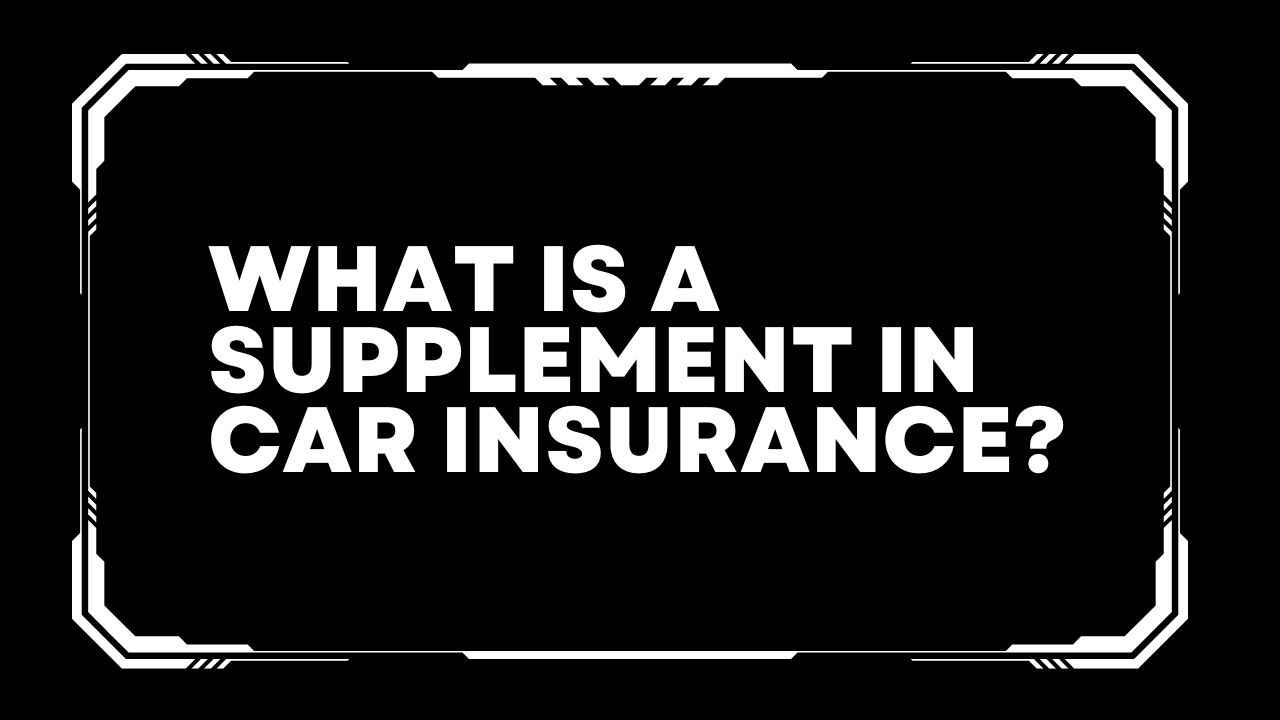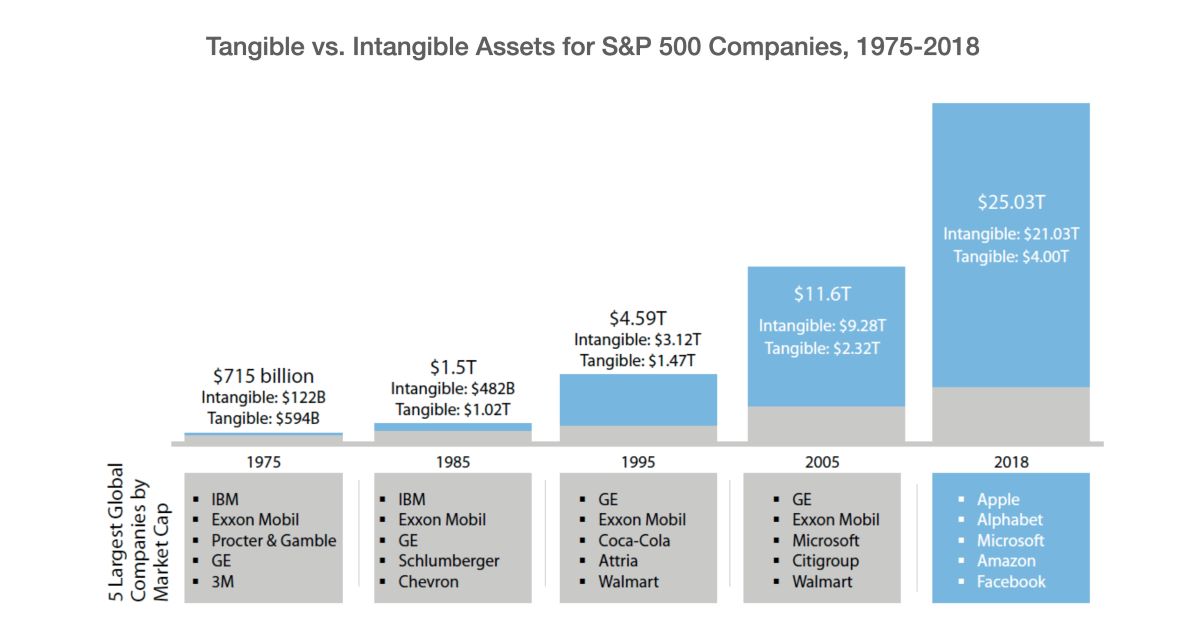

Finance
What Is Auto Insurance Fraud
Published: October 6, 2023
Learn about the growing problem of auto insurance fraud and its impact on the finance industry. Discover the tactics used by fraudsters and how to protect yourself.
(Many of the links in this article redirect to a specific reviewed product. Your purchase of these products through affiliate links helps to generate commission for LiveWell, at no extra cost. Learn more)
Table of Contents
Introduction
Insurance fraud has become a serious issue in recent years, with the auto insurance industry being particularly vulnerable to fraudulent activities. Auto insurance fraud refers to any fraudulent act committed with the intent to deceive an insurance company in order to obtain undeserved benefits or financial gain.
This illegal practice not only affects insurance companies but also has a direct impact on policyholders and ultimately leads to higher insurance premiums for everyone. It is estimated that auto insurance fraud costs billions of dollars annually. With such high stakes, it is crucial to understand the different types of auto insurance fraud, the consequences it brings, and how to combat it effectively.
In this article, we will delve into the world of auto insurance fraud, exploring its definition, the various types of fraudulent activities, and the impact it has on insurance companies and policyholders. We will also discuss methods to detect and prevent auto insurance fraud to safeguard the industry and ensure a fair and transparent insurance system for all.
Definition of Auto Insurance Fraud
Auto insurance fraud involves individuals or groups deliberately deceiving insurance companies to obtain financial benefits to which they are not entitled. It can occur at various stages of the insurance process, including application, claim filing, and settlement. These fraudulent acts range from staged accidents and fake injuries to exaggerated claims and ghost policies.
One common form of auto insurance fraud is the deliberate staging of accidents. This can involve orchestrating a collision with another vehicle or intentionally causing damage to one’s own vehicle to make it appear as an accident. The goal is to file a fraudulent claim and receive compensation for the damages or injuries that were falsely created.
Another type of auto insurance fraud involves submitting false claims for injuries that never occurred or exaggerating the severity of existing injuries. Fraudsters may collude with healthcare providers to fabricate medical records or seek unnecessary treatments, driving up the cost of claims. These fraudulent activities not only harm insurance companies but also contribute to rising healthcare costs and premiums for policyholders.
Exaggerated claims are yet another form of auto insurance fraud. This occurs when policyholders intentionally inflate the value of their losses, such as the cost of vehicle repairs or the value of stolen items. By exaggerating the claim, they aim to receive a higher payout from the insurance company.
Finally, ghost policies are a particularly deceptive form of auto insurance fraud. These policies are created with fictitious information, typically by unlicensed agents or fraudsters posing as legitimate agents. Ghost policies may appear to be valid, with fake policy documents and payment receipts, but they provide no actual coverage. Individuals who unknowingly purchase these policies are left with no insurance protection and risk severe financial loss in the event of an accident or theft.
Auto insurance fraud not only harms insurance companies but also affects the general public. It leads to increased insurance premiums for policyholders as insurance companies pass on the cost of fraudulent claims. Moreover, it undermines the integrity of the insurance industry and erodes trust among consumers.
Types of Auto Insurance Fraud
Auto insurance fraud encompasses a wide range of deceptive practices aimed at manipulating insurance companies, including staged accidents, fake injuries, exaggerated claims, and ghost policies. Understanding these different types of fraud is essential in detecting and preventing fraudulent activities in the auto insurance industry.
Staged Accidents
Staged accidents are a prevalent form of auto insurance fraud. In these situations, fraudsters purposely cause or arrange a collision to make it appear as an accident. They may involve innocent drivers or passersby who are unaware of the scheme. The fraudsters will then file fraudulent claims for damages or injuries sustained during the staged accident, seeking compensation from their insurance company. Staged accidents not only result in financial losses for insurance companies but also put innocent individuals at risk of injury or property damage.
Fake Injuries
Faking injuries is another common form of auto insurance fraud. Fraudsters may claim to have sustained injuries in an accident, even if they were not involved in one or the accident was minor. They may collude with healthcare providers to create false medical records or undergo unnecessary treatments to support their fraudulent claims. These fake injuries can result in significant payouts from insurance companies and have a direct impact on insurance premiums for policyholders.
Exaggerated Claims
Exaggerating the value of a claim is a form of auto insurance fraud where policyholders intentionally overstate the extent of their losses. This can include inflating the cost of repairs, exaggerating the value of stolen items, or claiming damages that were unrelated to the accident. By inflating the claim, fraudsters aim to receive a larger payout from the insurance company. Exaggerated claims contribute to higher insurance premiums for policyholders and place a strain on insurance company resources.
Ghost Policies
Ghost policies are fictitious insurance policies created by fraudsters. These policies are often sold by unlicensed agents or individuals posing as legitimate insurance agents. Ghost policies appear authentic, but they offer no real coverage. Victims who unknowingly purchase ghost policies are left without insurance protection and may face severe financial loss in the event of an accident or theft. The sale of ghost policies not only defrauds unsuspecting individuals but also tarnishes the reputation of the insurance industry.
Identifying and addressing these different types of auto insurance fraud is crucial in protecting the integrity of the insurance system and ensuring fair premiums for policyholders. Insurance companies employ various methods to detect fraudulent activities and work closely with law enforcement agencies to prosecute those involved in fraudulent schemes.
Staged Accidents
Staged accidents are a prevalent form of auto insurance fraud where individuals intentionally orchestrate collisions to make it appear as an accident. This fraudulent practice is particularly concerning as it puts innocent drivers, passengers, and pedestrians at risk while also causing significant financial losses for insurance companies.
Fraudsters may organize staged accidents by collaborating with others involved in the scheme, including other drivers or even pedestrians. They carefully plan the accident to ensure that it appears as a legitimate collision. These accidents can range from simple rear-end collisions to more complex and orchestrated scenarios where multiple vehicles are involved.
Staged accidents are often designed to maximize the potential for insurance payouts. Fraudsters typically file fraudulent claims seeking compensation for vehicle damage, personal injuries, and medical expenses, even though no real injuries or damages have occurred. By presenting false evidence and misleading information, they aim to deceive insurance companies into providing undeserved benefits.
The consequences of staged accidents are far-reaching. Innocent individuals involved in these accidents may suffer physical injuries and emotional distress. They may also face higher insurance premiums, despite being victims themselves. Insurance companies, on the other hand, incur significant financial losses due to the fraudulent claims. These losses are ultimately passed on to policyholders, resulting in increased insurance premiums for everyone.
Combatting staged accidents involves a multi-faceted approach. Insurance companies employ various strategies to detect and investigate suspected fraudulent claims. They analyze claim patterns, examine accident reports, and may even employ surveillance or engage specialized investigators to gather evidence. Collaboration with law enforcement agencies is crucial in identifying and prosecuting individuals involved in staged accidents.
Moreover, public awareness and education play a vital role in preventing staged accidents. Informing drivers about the signs and red flags of potential staged accidents can help them be more vigilant on the road. Encouraging reporting of suspicious accidents and providing resources for individuals to report suspected fraud can aid in uncovering such fraudulent activities.
Overall, staged accidents pose a significant threat to the integrity of the auto insurance industry. By raising awareness, implementing strict detection measures, and working collaboratively, insurance companies and law enforcement can deter and prosecute those involved in staged accidents, protecting both policyholders and innocent individuals from the devastating consequences of this form of auto insurance fraud.
Fake Injuries
Fake injuries are a prevalent type of auto insurance fraud where individuals falsely claim to have sustained injuries in an accident. These fraudulent claims can range from non-existent injuries to exaggerations of actual injuries, with the intention of receiving undeserved compensation from insurance companies.
Fraudsters who perpetrate fake injuries often collude with healthcare providers, such as doctors, chiropractors, or physical therapists, to fabricate medical records and support their fraudulent claims. They may undergo unnecessary treatments or submit false medical bills to inflate the value of their claims. These deceptive practices drive up the cost of claims and ultimately lead to higher insurance premiums for policyholders.
There are several common schemes that fraudsters employ to perpetrate fake injuries. One method is the use of pre-existing injuries. They may claim that an existing medical condition was caused or worsened by the accident, exaggerating the impact of the incident on their physical well-being.
Another technique used is the fabrication of injuries that supposedly result from the accident. Fraudsters may feign pain, restrict movement, or simulate symptoms to convince insurance companies of their injuries. They may even go as far as seeking unnecessary medical treatments, such as physical therapy or surgery, in an effort to validate their claims.
Fake injuries not only harm insurance companies but also have wider ramifications. Legitimate claimants, who genuinely require medical attention and compensation for their injuries, may face skepticism and difficulty in receiving the assistance they deserve. Additionally, the cost of fake injury claims contributes to the rising healthcare expenses and insurance premiums for all policyholders.
To combat fake injuries, insurance companies employ various methods of detection. They scrutinize medical records, consult medical professionals, and conduct independent medical examinations to verify the legitimacy of claims. Technology, such as artificial intelligence and data analytics, is also utilized to identify patterns of fraudulent behavior.
Education and awareness are vital in preventing and deterring fake injury claims. Insurance companies provide resources to policyholders on how to detect suspicious behavior and report fraudulent activity. Public awareness campaigns emphasize the consequences of fake injury claims and the importance of maintaining the integrity of the insurance system.
By diligently investigating suspicious claims, leveraging technology, educating policyholders, and collaborating with healthcare providers, insurance companies can effectively combat fake injuries, protecting the industry and ensuring fair compensation for those with legitimate injuries.
Exaggerated Claims
Exaggerated claims are a form of auto insurance fraud where policyholders intentionally inflate the value of their losses to receive a higher payout from insurance companies. This deceptive practice can involve exaggerating the cost of vehicle repairs, the value of stolen items, or the extent of damages caused by an accident.
By inflating the claim, fraudsters aim to maximize their financial gain at the expense of insurance companies and policyholders. They may submit falsified receipts, invoices, or estimates to support their exaggerated claims. This not only increases the financial burden on insurance companies but also contributes to rising insurance premiums for all policyholders.
Exaggerated claims can take various forms. For example, a policyholder may inflate the cost of repairing their vehicle following an accident by submitting overpriced estimates or including unnecessary repairs. Alternatively, they may claim that expensive personal belongings were stolen during a break-in, inflating the value of the items beyond their true worth.
In some cases, policyholders may intentionally cause additional damages to their vehicles to support their exaggerated claims. They may dent their car, break windows, or tamper with components, making it appear as if the damages were caused by the accident when in reality they were not.
The consequences of exaggerated claims are significant. It leads to higher claim costs for insurance companies, which are ultimately passed on to policyholders in the form of increased premiums. This places an additional financial burden on honest policyholders while rewarding fraudulent behavior.
To combat exaggerated claims, insurance companies employ various strategies. They conduct thorough investigations, reviewing documentation, and engaging experts to assess the legitimacy of the claim. Digital tools and data analytics are also utilized to identify patterns of exaggerated claims and flag suspicious activities.
Educating policyholders about the consequences of exaggerated claims and the importance of honesty in the insurance process is essential. Insurance companies provide resources and guidelines on how to accurately report damages and losses, encouraging policyholders to be truthful in their claims.
By enforcing strict assessment procedures, leveraging technology, and promoting transparency, insurance companies can discourage exaggerated claims and protect the integrity of the insurance system. It not only benefits insurance companies and policyholders but also ensures a fair and sustainable insurance market for everyone.
Ghost Policies
Ghost policies are a deceptive form of auto insurance fraud where fraudsters create fictitious insurance policies that provide no real coverage. These fraudulent policies are typically sold by unlicensed agents or individuals posing as legitimate insurance agents. Victims who unknowingly purchase ghost policies are left without insurance protection and face severe financial consequences in the event of an accident or theft.
Ghost policies are expertly designed to mimic legitimate insurance coverage. They may include fabricated policy documents, payment receipts, and even fake insurance company logos. Unsuspecting individuals who purchase these policies believe they have obtained the necessary coverage to protect their vehicles.
The sale of ghost policies not only defrauds innocent individuals but also undermines the trust and integrity of the insurance industry. Victims who discover they have purchased a ghost policy are left vulnerable and are often forced to bear the financial burden of damages or injuries themselves, which can lead to significant financial hardship.
Fraudsters who sell ghost policies target individuals who are seeking affordable insurance options or are unaware of the risks associated with unlicensed agents. They may offer enticingly low premiums or claim to be affiliated with well-known insurance companies, preying on the belief that they are legitimate and trustworthy agents.
To protect themselves from falling victim to ghost policies, individuals should be cautious when purchasing insurance and verify that the agent or provider is licensed and reputable. It is important to conduct research, check for reviews or complaints, and verify the agent’s credentials before making any payments.
Insurance companies and law enforcement agencies are committed to combating the sale of ghost policies. They work together to identify and shut down fraudulent operations, prosecute those involved, and educate the public about the risks associated with unlicensed agents. Insurance industry watchdogs also play a crucial role in monitoring insurance practices and reporting suspicious activities.
Public awareness campaigns are crucial in preventing the sale and purchase of ghost policies. These campaigns not only educate individuals about the risks of dealing with unlicensed agents but also provide resources for reporting suspected fraud or seeking assistance in navigating the insurance market.
By promoting awareness, enforcing strict regulations, and fostering collaboration between insurance companies, law enforcement agencies, and the public, the sale of ghost policies can be mitigated. This will help protect individuals from financial hardship and maintain the trust and integrity of the auto insurance industry.
Consequences of Auto Insurance Fraud
Auto insurance fraud has far-reaching consequences that impact insurance companies, policyholders, and society as a whole. This illegal activity not only leads to financial losses but also undermines the integrity of the insurance industry and drives up insurance premiums for everyone.
One of the significant consequences of auto insurance fraud is the financial burden it places on insurance companies. Fraudulent claims result in increased claim costs, which are ultimately passed on to policyholders in the form of higher insurance premiums. Insurance companies invest significant resources in detecting and investigating fraudulent activities, diverting funds that could otherwise be used to improve services or reduce premiums for honest policyholders.
Policyholders also suffer from the consequences of auto insurance fraud. The increase in fraudulent claims leads to higher insurance premiums for all consumers. Honest policyholders bear the financial burden of the fraudulent actions of a few individuals, resulting in higher costs and making it more challenging for them to afford necessary coverage.
Auto insurance fraud also creates significant social and economic consequences. The fraudulent activities drive up healthcare costs as fraudsters collude with healthcare providers to fabricate medical records or seek unnecessary treatments. This puts additional strain on the healthcare system and contributes to the overall rise in medical expenses.
Moreover, auto insurance fraud erodes trust and credibility in the insurance industry. When individuals witness fraudulent activities going unpunished, it diminishes confidence in the insurance system as a whole. This lack of trust can discourage individuals from obtaining insurance or lead them to question the validity of their coverage.
Additionally, auto insurance fraud has a negative impact on society as it diverts resources from legitimate claims. With limited funds available, insurance companies may be forced to allocate resources towards investigating and combating fraud rather than providing prompt and fair compensation to policyholders with legitimate claims.
To combat the consequences of auto insurance fraud, insurance companies, law enforcement agencies, and policymakers must work together. Strict regulations, effective detection methods, and harsh penalties for those found guilty of fraudulent activities are crucial. Public awareness campaigns also play a vital role in educating individuals about the consequences of insurance fraud and encouraging them to report any suspicious activities.
By actively addressing and combating auto insurance fraud, we can protect the integrity of the insurance industry, promote fairness, and ensure affordable premiums for all policyholders.
Methods to Detect Auto Insurance Fraud
Detecting auto insurance fraud is essential for insurance companies to protect themselves and their policyholders. By implementing various methods and technologies, insurance companies can identify suspicious activities and fraudulent claims, reducing financial losses and maintaining the integrity of the insurance system.
Data Analytics
Data analytics plays a crucial role in detecting auto insurance fraud. Insurance companies utilize advanced algorithms and data mining techniques to analyze large volumes of data, including policy information, claims history, and external data sources. By detecting patterns and anomalies, data analytics can identify potential fraudulent activities, such as unusual claim patterns or false information provided during the application process.
Artificial Intelligence (AI)
AI technology is increasingly being employed to detect auto insurance fraud. AI algorithms can automatically analyze claims data, identifying inconsistencies and red flags that may indicate fraudulent behavior. By continuously learning from historical data and new cases, AI can improve its ability to detect increasingly sophisticated fraud schemes and adapt to evolving tactics used by fraudsters.
Investigative Techniques
Insurance companies often employ specialized investigative units to detect and investigate suspicious claims. These units may consist of experienced fraud investigators who have expertise in identifying fraudulent activities. They conduct thorough investigations, gathering evidence, interviewing witnesses, and collaborating with law enforcement agencies to build strong cases against fraudsters.
Collaboration and Information Sharing
Insurance companies also engage in collaborative efforts to combat auto insurance fraud. They actively share information and best practices within the industry, working together to identify emerging fraud trends and improve detection methods. Collaboration with law enforcement agencies is crucial in prosecuting fraudsters and deterring fraudulent activities.
Surveillance and Technology
Insurance companies may employ surveillance techniques to gather evidence and detect fraud. This can include video surveillance, GPS tracking, and social media monitoring to verify the legitimacy of a claim or detect inconsistencies in the claimant’s behavior or statements. Advanced technology, such as image recognition software, may also be utilized to identify staged accidents or detect manipulated images in claim documents.
Fraud Hotlines and Reporting Systems
Insurance companies often provide fraud hotlines or online reporting systems to encourage individuals to report suspected fraudulent activities. These reporting mechanisms allow policyholders, employees, or concerned citizens to report suspicious claims anonymously. The information provided through these channels can help insurance companies investigate and prevent fraudulent activities.
By combining these detection methods and continuously improving their fraud detection capabilities, insurance companies can effectively identify and combat auto insurance fraud. Early detection not only reduces financial losses but also acts as a deterrent, discouraging potential fraudsters from engaging in fraudulent activities and contributing to a fair and transparent insurance system for all.
Preventing Auto Insurance Fraud
Preventing auto insurance fraud is crucial for insurance companies to maintain the integrity of the industry and protect policyholders from the financial burdens associated with fraudulent activities. By implementing preventive measures and promoting awareness, insurance companies can significantly reduce the occurrence of auto insurance fraud.
Education and Public Awareness
Educating the public about the risks and consequences of auto insurance fraud is essential. Insurance companies can conduct public awareness campaigns, disseminate informative materials, and provide resources to policyholders on how to identify and report potential fraud. By empowering individuals with knowledge, they can make informed decisions and be vigilant against fraudulent activities.
Verification and Due Diligence
Insurance companies should conduct thorough verification processes during policy application and claims assessment. This includes verifying the authenticity of documents provided by policyholders, cross-checking information with external databases, and ensuring that policyholders meet eligibility criteria. Additionally, conducting periodic audits and checks can help identify any discrepancies or suspicious patterns.
Robust Underwriting Practices
Implementing stringent underwriting practices is crucial in preventing auto insurance fraud. This involves careful evaluation of policy applications, including thorough risk assessment and consideration of previous claim histories. Insurance companies should utilize technology and data analysis to detect inconsistencies or fraudulent information during the underwriting process.
Collaboration with Industry Partners
Insurance companies should collaborate with industry partners, including law enforcement agencies, regulatory bodies, and other insurance companies, to share information and best practices in detecting and preventing auto insurance fraud. Such collaboration can facilitate the identification of new fraud schemes, streamline investigation processes, and aid in the prosecution of fraudsters.
Advanced Technology Implementation
Insurance companies should leverage advanced technologies, such as data analytics, artificial intelligence, and image recognition, to detect suspicious activities and identify potential fraud. These technologies can analyze vast amounts of data, uncover hidden patterns, and identify anomalies, helping insurance companies stay one step ahead of evolving fraud tactics.
Fraud Investigations and Prosecution
Insurance companies should conduct thorough investigations into suspected fraudulent activities and collaborate with law enforcement agencies to prosecute fraudsters. Taking a strong stance against auto insurance fraud sends a clear message that fraudulent activities will not be tolerated, acting as a deterrent for potential fraudsters.
By implementing these preventive measures and fostering a culture of integrity and transparency, insurance companies can mitigate the occurrence of auto insurance fraud. Collaboration among industry stakeholders and public education are key pillars in maintaining a fair and sustainable insurance system, safeguarding both insurance companies and policyholders from the financial and societal impacts of fraudulent activities.
Conclusion
Auto insurance fraud poses significant challenges for insurance companies, policyholders, and society as a whole. It not only leads to financial losses but also erodes trust in the insurance industry and increases insurance premiums for honest policyholders. However, by implementing detection methods, preventive measures, and promoting public awareness, the occurrence and impact of auto insurance fraud can be significantly reduced.
Insurance companies employ various strategies, such as data analytics and artificial intelligence, to detect and investigate suspicious activities and claims. By leveraging technology and advanced algorithms, they can identify patterns, anomalies, and potential fraud indicators. Collaboration with law enforcement agencies and industry partners further enhances the effectiveness of fraud detection and prosecution efforts.
Preventing auto insurance fraud relies on education and awareness. Public awareness campaigns educate individuals about the risks and consequences of fraudulent activities, empowering them to recognize and report suspicious behavior. Insurance companies play a critical role in providing resources and guidelines to policyholders, ensuring clarity and transparency in the insurance process.
Verification processes, thorough underwriting, and robust fraud investigations contribute to preventing fraudulent activities. Insurance companies should also implement advanced technology, such as image recognition software and digital tools, to stay ahead of constantly evolving fraud tactics.
Ultimately, preventing auto insurance fraud requires a coordinated effort from insurance companies, policyholders, regulatory authorities, and law enforcement agencies. By working together, sharing information, and promoting a culture of integrity, the insurance industry can strengthen its defense against fraud and protect the interests of both policyholders and insurance companies.
By actively combating auto insurance fraud and ensuring fair and transparent insurance practices, the industry can maintain its credibility, provide affordable coverage for policyholders, and contribute to a sustainable and trustworthy insurance system.














